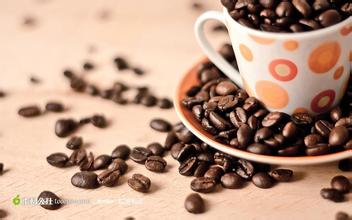The main source of Italian flavor coffee coffee is the coffee producing area.
If you see "Italian", "Vienna", "Nanyi" and other signs on the coffee label, do not mistakenly think that the coffee beans have anything to do with the above-mentioned place names-probably not, because traditionally, "Italy" and "Vienna" are synonymous with the degree of roasting (or blending) and do not mean that they are made in Italy or Vienna (as mentioned above). Coffee beans are not grown and produced in Europe.
"Beiyi" usually refers to medium-light, light brown, unoiled baking of beans; "Nanyi" usually refers to the deep baking of bright oil and dark brown on the surface of beans; and "Italian baking" generally refers to deeper baking. "French baking (French Roast)" generally refers to the extremely deep baking with a near-black color, slightly coke flavor and no acid. "Vienna" and "Miranchi" usually refer to mixed coffee made from coffee beans of different roasting degrees.
The deeper the degree of baking, the higher the temperature of the roasting. Generally speaking, the medium-shallow "Beiyi" baking flavor is more bright and light, may have fruit-like acidity, very low bitterness or no bitterness. The deep high-temperature baked "Nanyi" has a low, full-bodied and slippery flavor, with a sweet finish like caramel. The flavor of "French baking" is monotonous, with a slightly coke flavor and no acidity at all.
3. Grading of coffee beans, small producing areas, farms, and other signs
At present, the grading system of coffee bean producing areas in the world is not uniform, and each coffee producing country has its own grading system and grading name, so you may see the following words "SHB", "AA+", "Supremo", "Extra-Fancy", "round bean / adzuki bean" and so on on the coffee label, which are the grading names of coffee beans. Baked beans on the market are sometimes marked with the grading of individual coffee, usually not.
Central American coffee is graded on the basis of planting altitude, and coffee beans above 4500 feet above sea level are marked "SHB (Strictly Hard Bean)". "AA+" is the highest grade of Kenyan coffee, and only batches with particularly good flavor and few defects are allowed to be labeled "AA+". "AA" is the largest, "AB" is smaller, and "PB" is round beans. Colombia in South America uses the appearance size and defect rate of coffee beans as the grading standard, and "Supremo" represents the largest grain. It is worth noting that the appearance size of coffee beans has nothing to do with the flavor. The higher the altitude, the better the flavor.
The name of the country is immediately followed by the marking of small producing areas. Take Ethiopia-Ethiopia (Ethiopia Yirgacheffe) as an example. Ethiopia's Ethiopia is the name of the coffee-producing country, indicating that it is a "single coffee". The Ethiopia is a narrow, long, high-altitude producing area in Ethiopia's Sidamo district. Different small producing areas mean different flavor characteristics. For example, Ethiopia's famous Ethiopia-Haramoka (Ethiopia Harrar) is produced in southern Ethiopia near Somalia. Haramoka has wine-like aromas, blueberry or grape flavors, thick palate, fresh and bright Yega snow coffee, citrus or lemon peel aromas, and a thin taste.

Important Notice :
前街咖啡 FrontStreet Coffee has moved to new addredd:
FrontStreet Coffee Address: 315,Donghua East Road,GuangZhou
Tel:020 38364473
- Prev

The practice of coffee beans the common practice of Daquan coffee beans
. Indication of origin: the coffee beans sold in the "single product" and "comprehensive" coffee market can be roughly divided into two categories: single coffee (Single Origins- referred to as S.O) integrated coffee (Coffee Blends) "single coffee" generally refers to a single style of coffee beans from a single country or producing area. It can be compared to a coffee solo. If a bag of coffee is marked with a coffee producing country
- Next

What are the types of coffee beans in Daquan
Ipoh is commonly known as Barrow, a city in northern Malaysia and the origin of white coffee. MALCO White Coffee from Ipoh is famous for its common aroma and taste. It is carefully prepared with roasted high-end coffee beans with attractive aroma of high-quality cream, and the entrance is fragrant and smooth. MALCO White coffee Marco Bao original white coffee is out-and-out
Related
- Does Rose Summer choose Blue, Green or Red? Detailed explanation of Rose Summer Coffee plots and Classification in Panamanian Jade Manor
- What is the difference between the origin, producing area, processing plant, cooperative and manor of coffee beans?
- How fine does the espresso powder fit? how to grind the espresso?
- Sca coffee roasting degree color card coffee roasting degree 8 roasting color values what do you mean?
- The practice of lattes: how to make lattes at home
- Introduction to Indonesian Fine Coffee beans-- Java Coffee producing area of Indonesian Arabica Coffee
- How much will the flavor of light and medium roasted rose summer be expressed? What baking level is rose summer suitable for?
- Introduction to the characteristics of washing, sun-drying or wet-planing coffee commonly used in Mantenin, Indonesia
- Price characteristics of Arabica Coffee Bean Starbucks introduction to Manning Coffee Bean Taste producing area Variety Manor
- What is the authentic Yega flavor? What are the flavor characteristics of the really excellent Yejasuffi coffee beans?

